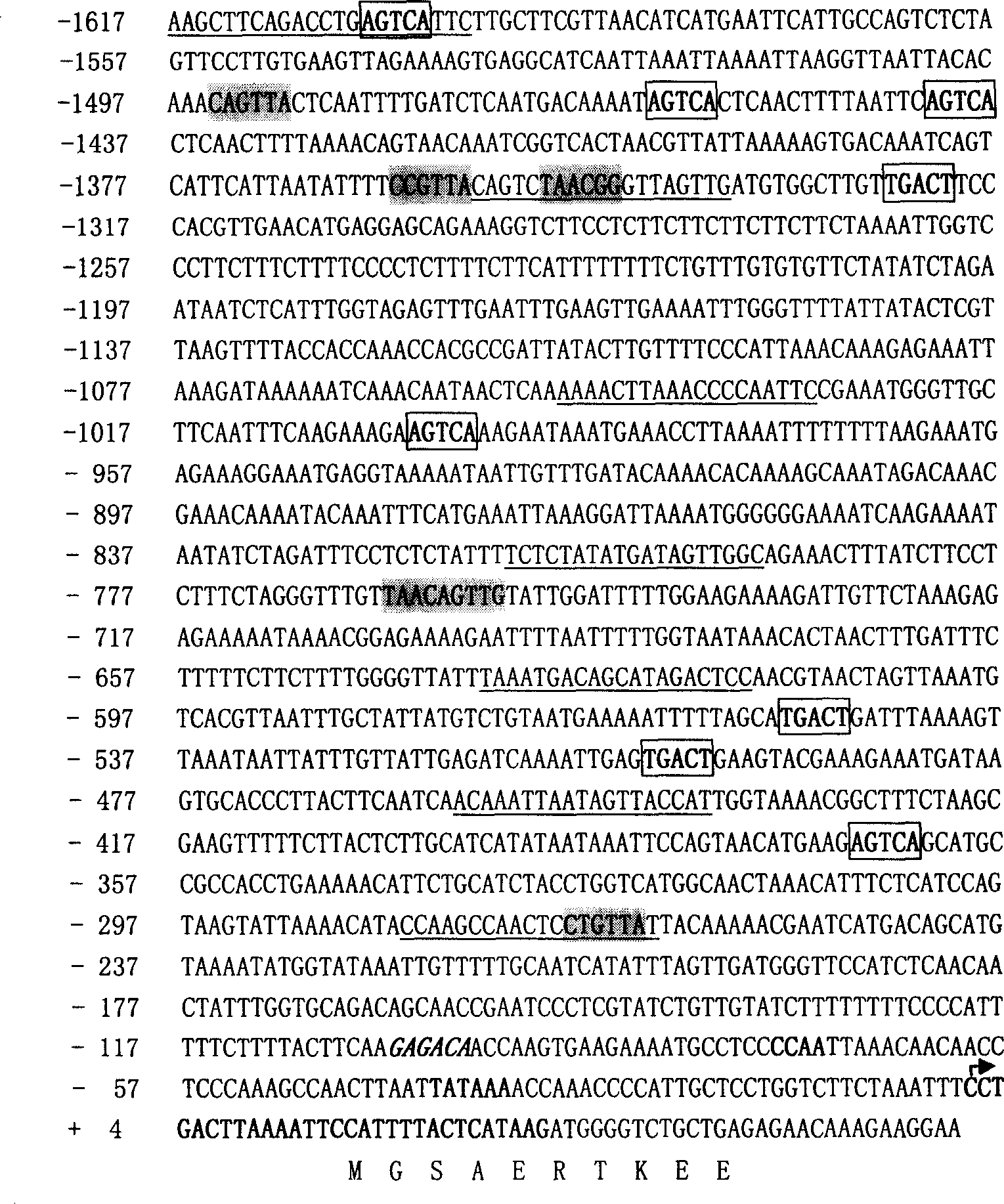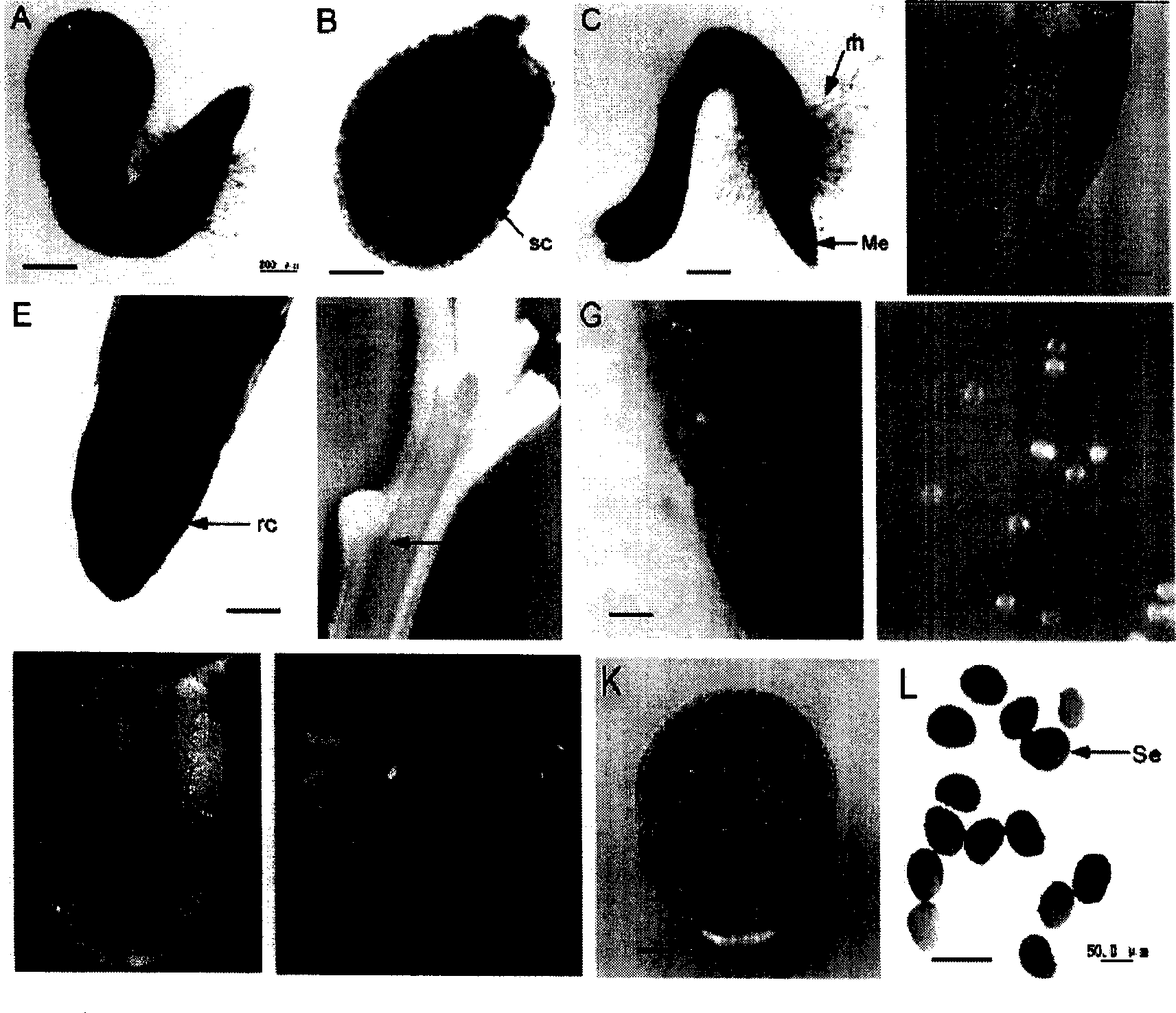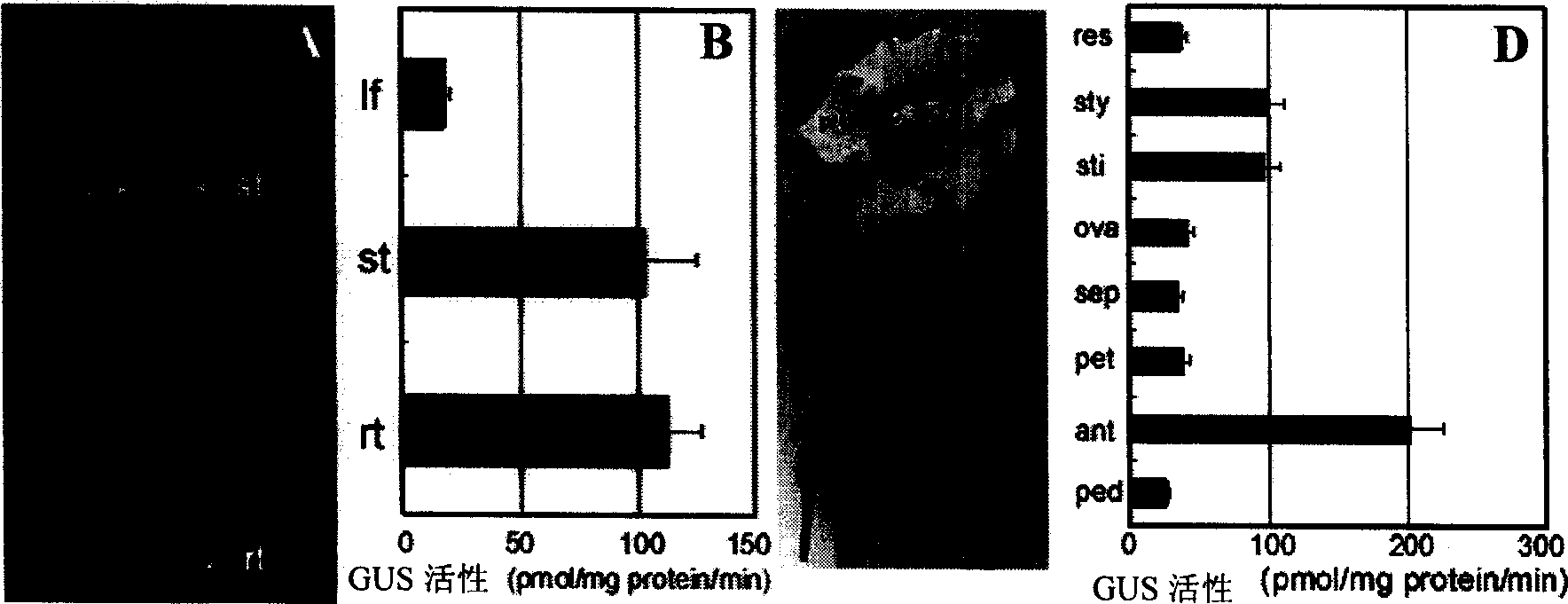Gene promoter originated from cotton and its application
A promoter and gene technology, applied in the field of plant gene promoter and its application in plant quality improvement, can solve the problems of no identification of plant glucuronosyltransferase promoter region, few promoter structural features, etc.
- Summary
- Abstract
- Description
- Claims
- Application Information
AI Technical Summary
Problems solved by technology
Method used
Image
Examples
Embodiment 1
[0024] Embodiment 1, cloning and sequence analysis of the promoter pGhGlcat1 of the cotton glucuronosyltransferase gene GhGlcat1
[0025] 1. Cloning of the promoter pGhGlcat1 of the cotton glucuronosyltransferase gene GhGlcat1
[0026] (Paterson AH, Brubaker CL, Wendel JF. A rapid method for extraction cotton (Gossypium spp.) Genomic DNA suitable for RFLP or PCR analysis. Plant Mol Biol Rep 1993; 11:122-7.) was extracted from cotton varieties with reference to the method of Paterson et al. Nuclear genomic DNA from cotton 12 (Gossypium hirsutum cv. CRI 12) leaves was then analyzed with an improved chromosome walking method (A.M.Wu, J.Y.Liu, An improved method of genomic walking for promoter sequences cloning, Chin.J.Biochem.Mol.Biol. 22 (2006) 243-246.) Cloning of the promoter sequence of cotton glucuronosyltransferase gene GhGlcat1. The cloned and purified DNA fragments were ligated into the vector pGEM-T Easy (Promega Company), transformed into E.coli DH5α competent cells, a...
Embodiment 2
[0031] Example 2. Transformation of tobacco with plant expression vector containing pGhGlcat1 promoter and GUS gene and determination of GUS activity and histochemical localization
[0032] 1. Construction of plant expression vector pBI-pGhGlcat1::GUS containing pGhGlcat1 promoter and GUS gene
[0033] In order to detect the activity of the GhGlcat1 promoter pGhGlcat1 in transgenic tobacco, a tobacco expression vector containing pGhGlcat1 and GUS genes is now constructed. The specific method is: using the recombinant vector pGEM-T Easy-pGhGlcat1 constructed in Example 1 as a template, in Forward primer 1: 5'-C AAGCTT CAGACCTGAGTCATTC-3' (underlined base is restriction endonuclease Hind III recognition site) and reverse primer 2: 5'-CT GGATCC Under the guidance of CTTATGAGTAAAATGGAATT-3' (the underlined base is the recognition site of restriction endonuclease BamHI), pGhGlcat1 was amplified by PCR, and the recognition sites of restriction endonuclease Hind III and BamHI were...
Embodiment 3
[0047] Example 3, Detection of the impact of pGhGlcat1 transgenic tobacco on abiotic stress
[0048] The T2 generation pBI-pGhGlcat1::GUS transgenic tobacco grown in the greenhouse for 3 weeks was treated with abiotic stress, and the roots of the plants were respectively immersed in the following solutions using MS culture medium as solvent: 200mM sucrose (Suc), 200mM glucose (Glu), 200mM fructose (Fru), 200mM mannitol (Man), 200mM sorbitol (Sor), 50μM naphthaleneacetic acid (NAA), 10μM gibberellin (GA), 50μM abscisic acid (ABA), 20% PEG8000 ( PEG), 250mM NaCl, 50μM methyljasmonic acid (MeJA) and 1mM ethylene (Eth), placed in an incubator at 25°C for 24h, and then the GUS activity was measured, MS culture medium was set as the control (CK), all GUS activity Data are the mean ± SE (standard error) of values determined for 5 different transgenic lines.
[0049] The GUS relative activity analysis results of the transgenic plants treated with the above-mentioned different solut...
PUM
 Login to View More
Login to View More Abstract
Description
Claims
Application Information
 Login to View More
Login to View More - R&D
- Intellectual Property
- Life Sciences
- Materials
- Tech Scout
- Unparalleled Data Quality
- Higher Quality Content
- 60% Fewer Hallucinations
Browse by: Latest US Patents, China's latest patents, Technical Efficacy Thesaurus, Application Domain, Technology Topic, Popular Technical Reports.
© 2025 PatSnap. All rights reserved.Legal|Privacy policy|Modern Slavery Act Transparency Statement|Sitemap|About US| Contact US: help@patsnap.com



